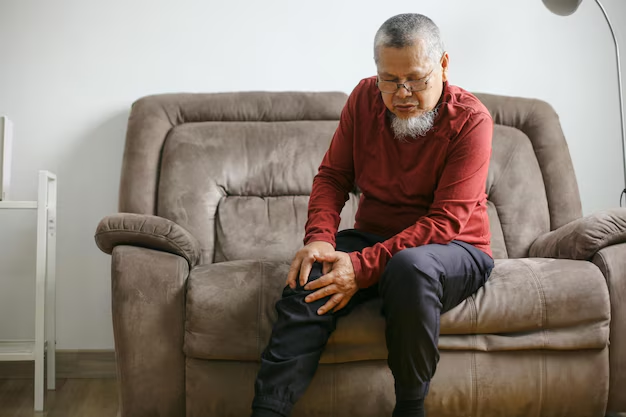Understanding Osteoporosis: Causes, Risks, and Prevention
Osteoporosis is often described as a silent thief, quietly diminishing bone strength until a fracture occurs. This condition affects millions globally, particularly postmenopausal women, but it can impact anyone with a range of underlying factors. Uncovering what causes osteoporosis involves delving into genetics, lifestyle choices, and more. Let's explore this issue comprehensively and empower you with knowledge to make informed health decisions.
What Exactly Is Osteoporosis?
Osteoporosis is a skeletal disorder characterized by decreased bone density and increased fragility. This condition increases the risk of fractures, particularly in the hip, spine, and wrist. As bones become porous and brittle, even minor falls or stresses can result in breaks.
The Complexity of Bone Remodeling
Bone is living tissue that is continuously broken down and rebuilt in a process called remodeling. Osteoclasts and osteoblasts are the two types of cells involved: the former breaks bone down, and the latter builds it back up. When the creation of new bone tissue doesn't keep pace with the removal of old bone, density begins to decline.
Main Causes of Osteoporosis
Age and Hormonal Changes
Age is a significant factor. As people age, bones naturally become thinner. For women, menopause brings a sharp drop in estrogen, a hormone that helps protect bone density. Men, too, experience a decline in hormones like testosterone, which can impact bone health, albeit usually at a later age.
Genetic Predisposition
Genetics plays a crucial role in determining bone mass and quality. If your family has a history of osteoporosis or fractures, you may be at an increased risk. Genes influence bone size, turnover rates, and calcium regulation, among other factors.
Diet and Nutrient Deficiency
Bones require adequate calcium and vitamin D to stay healthy. Calcium supports bone structure, while vitamin D improves calcium absorption in the body. A diet low in these nutrients, or conditions that inhibit nutrient absorption, can contribute to osteoporosis.
Lifestyle Factors
Certain lifestyle choices can jeopardize bone health:
- Sedentary Lifestyle: Lack of weight-bearing exercise weakens bones.
- Smoking and Alcohol Consumption: Both impede calcium absorption and bone formation.
- Poor Nutrition: Abundant consumption of coffee, soft drinks, or too much protein can lead to bone density reduction.
Contributing Medical Conditions
Several medical conditions and their treatments can also affect bone health:
- Endocrine Disorders: Diseases like hyperthyroidism and diabetes can impact bone density.
- Gastrointestinal Surgery: Procedures like gastric bypass can affect nutrient absorption.
- Chronic Inflammation: Conditions such as rheumatoid arthritis or Crohn's disease create chronic inflammation, affecting bone health indirectly.
How Lifestyle Changes Can Mitigate Risks
Embrace an Active Lifestyle
Weight-bearing and muscle-strengthening exercises are crucial in preventing osteoporosis. Activities like walking, dancing, or lifting weights stimulate bones, promoting higher density. Exercise improves balance and flexibility, reducing fall risk.
Eat Bone-Nourishing Foods
Incorporate a diet rich in calcium and vitamin D. Dairy products, leafy greens, and fortified foods increase calcium intake. Sunlight exposure and fatty fish such as salmon provide vitamin D. For some, supplements may be necessary, but a healthcare professional should make this determination.
Avoid Tobacco and Limit Alcohol
Smoking cessation and moderated alcohol intake are vital steps. Both smoking and excessive drinking accelerate bone loss, so committing to healthier habits significantly impacts long-term bone health.
Understanding Diagnostic Approaches
Bone Density Tests
The most common diagnostic tool for osteoporosis is a DEXA scan (Dual-Energy X-ray Absorptiometry). It measures bone density in the hip and spine, helping to predict fracture risks accurately. These tests are non-invasive and quick, offering crucial insights for early intervention.
Screening Based on Risk Factors
Not everyone needs an immediate bone density test. However, those with risk factors like family history, early menopause, or certain medications should consider discussing screening options with their healthcare provider.
Navigating Treatment Options
Although this article doesn't provide medical advice, understanding available options is essential:
- Medications: There are several medications designed to slow bone loss and even rebuild bone. These vary from bisphosphonates to hormone-related therapy.
- Dietary Support: As mentioned earlier, maintaining a diet rich in calcium and vitamin D is foundational.
- Lifestyle Changes: Consistent exercise and lifestyle changes support healthier outcomes.
Empowering Choices for Better Bone Health
While osteoporosis has various causes, many aspects of it are preventable or manageable with informed lifestyle choices and attention to risk factors. Understanding this condition helps people take proactive steps, from diet and exercise to screening and medical consultation.
Final Thoughts on Protecting Your Bones
Building bone-friendly habits can revitalize overall health beyond just preventing osteoporosis. Prioritizing a balanced diet, staying active, and maintaining regular screenings creates a foundation for strong bones and a robust lifestyle. Being proactive in these aspects profoundly impacts your future, granting you more active years and fewer complications. Remember, it's never too late or too early to start nurturing your bone health.
Quick Summary for Busy Readers
- 🦴 Understand Osteoporosis: Loss in bone density, increased fracture risk.
- 📅 Main Causes: Aging, hormonal changes, genetic factors, lifestyle choices.
- 🥗 Nutritional Needs: Calcium and vitamin D are crucial for bone health.
- 🏃♀️ Lifestyle Changes: Regular exercise, balanced diet, and smoking cessation.
- 🩺 Medical Screening: Consider DEXA scans if at risk, consult with a healthcare provider.
- 🌟 Empowerment: Making informed choices today can help prevent fractures tomorrow.
Cultivate these practices for healthier bones and a vibrant lifestyle. Your commitment to understanding and adapting can make a significant difference.

Related Articles
- a Nurse Is Caring For a Client Who Has Osteoporosis.
- a Percutaneous Is Performed To Treat Osteoporosis Related Compression Fractures
- Can Alcohol Cause Osteoporosis
- Can I Do Pilates If I Have Osteoporosis
- Can I Reverse Osteoporosis
- Can Men Get Osteoporosis
- Can Osteoporosis Affect Teeth
- Can Osteoporosis Be Cured
- Can Osteoporosis Be Painful
- Can Osteoporosis Be Reversed